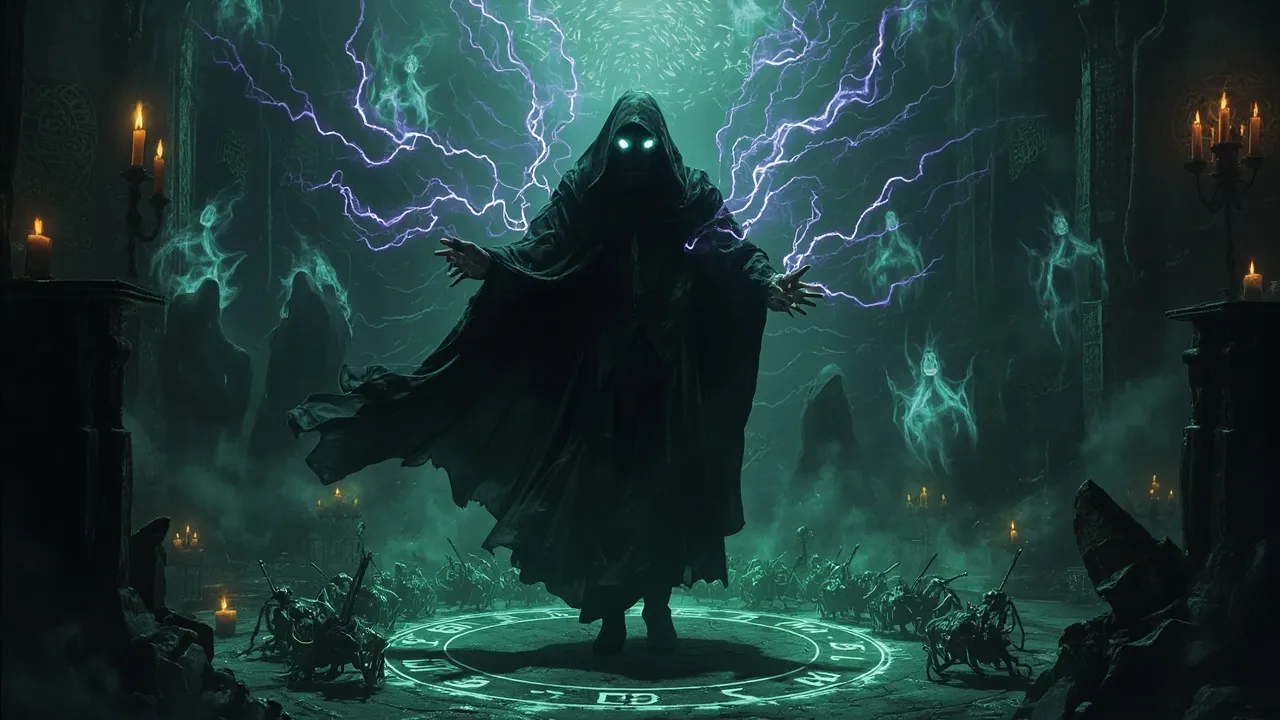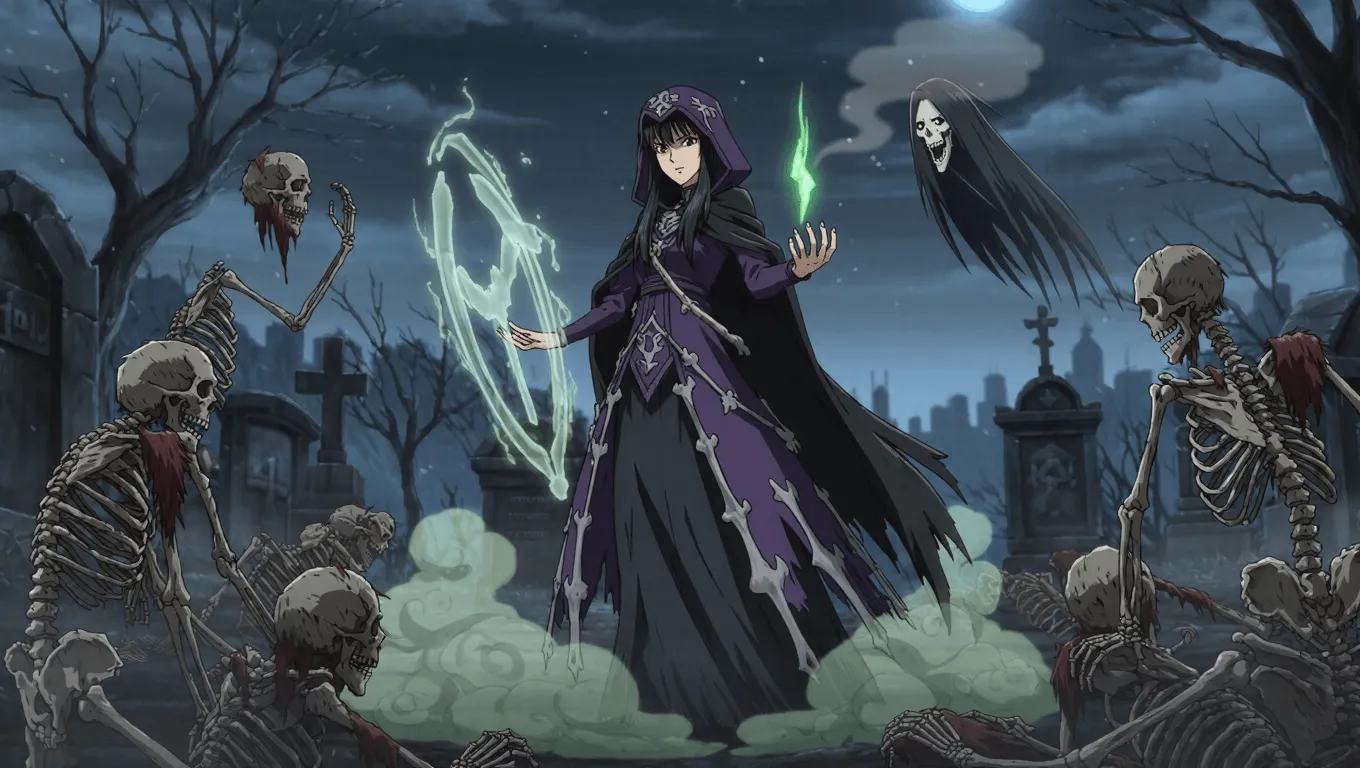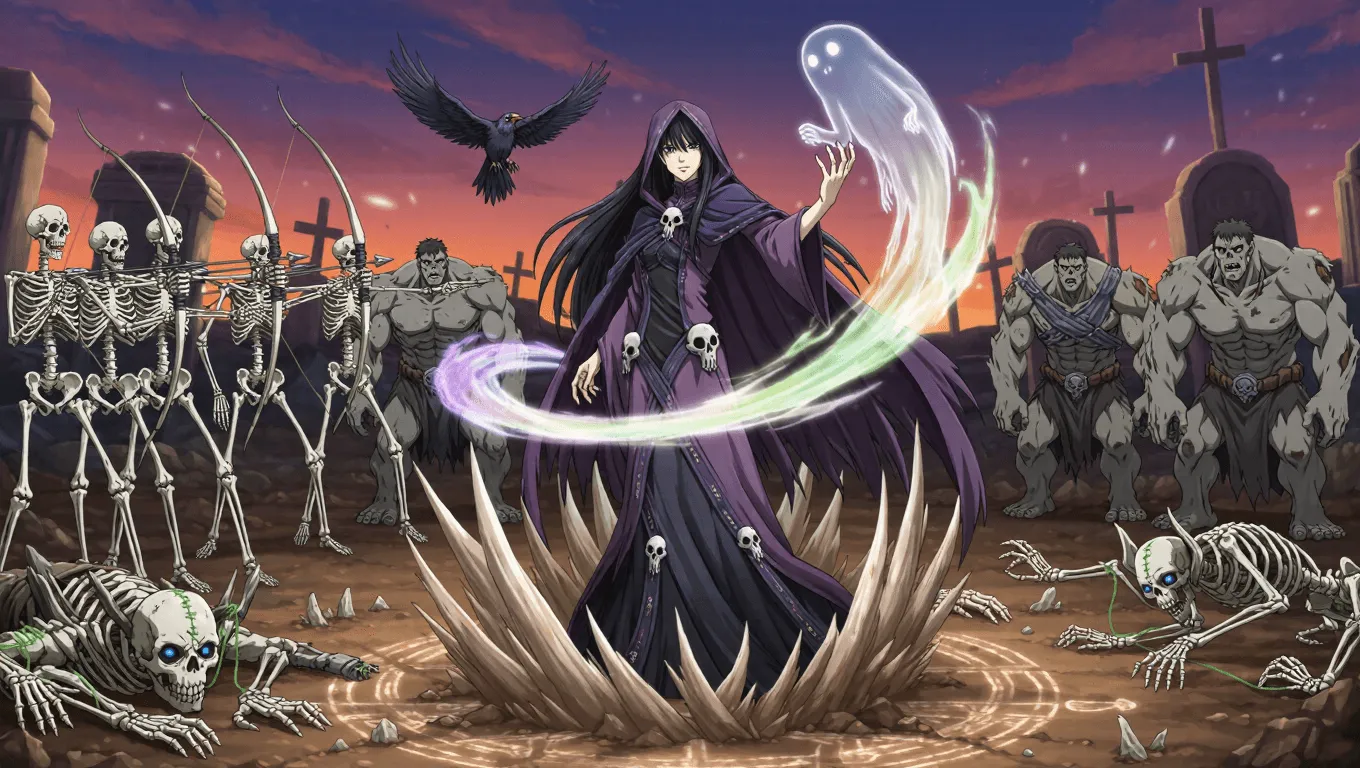Necromancy

Necromancy Video Demo 🎬
Table of Contents
Necromancy is the superpower of commanding deathly forces—reanimating corpses, binding spirits, and channeling necrotic energy to control the undead. In fantasy and superhero fiction, necromancers bend the line between life and death, turning graveyards into armies and memories into weapons. This guide breaks down how the power works, where it excels, and the trade-offs that keep it balanced in battles and campaigns. For more abilities like this, explore the full index on the superpower wiki or spin up ideas with the random superpower generator.
What Is Necromancy
Necromancy is a death-aligned power set focused on manipulating life force, corpses, and lost souls. Practitioners channel grave magic to raise zombies and skeletons, compel wights and revenants, siphon vitality, and commune with spirits. Depending on the setting, this power can be ritualistic and slow (summoning at moonrise, bargaining with shades) or instantaneous and flashy (a hand gesture that births a skeletal phalanx). Its flavor spans occult rites, witchcraft, dark sorcery, and bio-arcane science.
Common thematic elements include:
-
Communication with the dead, including spirit summoning and psychopomp roles.
-
Reanimation and corpse puppetry—using cadavers as tools or soldiers.
-
Soul manipulation—binding, splitting, or exchanging life essence.
-
Decay and entropy—wielding rot, blight, and entropy as offensive effects.
-
Lichdom—self-transformation into an undead state to escape mortality.
Core Abilities of Necromancy
Reanimation & Undead Command
The marquee ability is raising the dead—zombies, skeletons, ghouls, or spectral thralls—and issuing battlefield orders. More advanced users differentiate roles: skeletons as agile skirmishers, zombies as shock absorbers, revenants for hunting marked targets, and spirits for reconnaissance.
Soul Manipulation
Necromancers can tug at the threads of anima: draining life force to heal themselves, restoring a companion with borrowed essence, or shackling a foe’s soul to tether them in place. Some stories allow banishment of spirits or the forging of phylacteries.
Necrotic Energy Projection
This is the ranged, “blaster” side of the power. Bolts, waves, or mists of necrotic energy weaken tissue, corrode armor, and disrupt healing. A focused beam can wither plant life and short-circuit biological functions, while a wide aura spreads exhaustion and fear.
Grave Sense & Thanatomancy
Users perceive nearby corpses, lingering emotions at death sites, and the presence of ghosts. Thanatomancy—divination via the dead—lets them reconstruct a crime scene, ask the recently deceased for names, or read a battlefield’s memory.
Bone and Corpse Shaping
Beyond puppetry, fine-tuned control allows bone manipulation to craft armor, weapons, or barriers from skeletal matter. Expert users can stitch constructs—bone golems or stitched colossi—to act as siege units.
Disease & Decay Control (Setting-Dependent)
In grim settings, necromancy can steer pestilence and rot. Responsible narratives handle this carefully, framing it as a metaphysical decay field rather than real-world disease.
Application / Tactical Advantages in Combat
Necromancy excels at attrition warfare, denial of terrain, and force multiplication.
-
Numbers Advantage: Summoned undead soak damage and swarm objectives. Even low-tier minions force opponents to divide attention and deplete resources.
-
Area Denial: Bone walls, corpse mounds, and spectral nets clog chokepoints; blight zones punish anyone standing still.
-
Morale Pressure: Fear auras, whispering spirits, and revenant hunters break formations, generate panic, and expose flanks.
-
Information Superiority: Ghost scouts phase through walls, eavesdrop, and mark targets with chill sigils.
-
Sustain & Endurance: Life-drain, soul siphons, and necrotic wards let a user outlast tougher foes. Undead don’t tire, and destroyed minions can be reassembled.
Tactically, necromancy loves nighttime raids, crypt fights, catacombs, ruined cities, or any battlefield rich in remains. It struggles in sterile, sun-blasted, or consecrated zones—details covered under limitations.
Level: Level 1 🏙️, Level 2 🌇, Level 3 🌃
Level 1 🏙️ — Grave Initiate

-
Scope: Raise a handful of weak skeletons or zombies; maintain control within a short radius.
-
Tools: Minor necrotic bolt, basic fear hex, simple bone shield.
-
Utility: Commune with a recently deceased spirit for a few questions; sense corpses within a room.
-
Drawbacks: Concentration breaks easily; minions are clumsy and slow. Sustained use causes fatigue and chills.
Level 2 🌇 — Ossuary Adept

-
Scope: Command a small platoon of mixed undead (skeleton archers, zombie brutes, a single revenant).
-
Tools: Mid-range necrotic wave, bone spikes from the ground, spectral scout familiar.
-
Utility: Short rituals for battlefield reanimation; can stitch fallen foes into constructs; temporary soul tethers to prevent escapes.
-
Drawbacks: Requires materials (corpses, bone caches, grave soil) or power reserves. Holy wards and sunlight reduce potency.
Level 3 🌃 — Lich-Lord Ascendant

-
Scope: Field an undead legion, establish persistent blight zones, and split focus across multiple fronts.
-
Tools: City-scale fear veils, phylactery-based self-resurrection (setting-dependent), high-precision soul binding, and towering bone golems.
-
Utility: Reforge battlefield terrain—bone causeways, necrotic moats; raise fallen enemies instantly; command ancient spirits with unique talents.
-
Drawbacks: Heavy narrative costs: moral corruption, metaphysical debts, and catastrophic backlash if the power source (phylactery, death god pact, necro-reactor) is severed.
Limitations of Using the Necromancy
-
Resource Dependence: Reanimation needs remains, grave dust, or ambient death energy. Pristine environments starve the power.
-
Control Bandwidth: Each minion consumes attention. Over-summoning causes erratic behavior or mutiny by clever undead.
-
Consecrated Interference: Sanctified ground, wards, and exorcist seals can suppress or banish summons.
-
Sunlight & Vital Fields: Strong solar radiance, life auras, or druidic sanctuaries erode necrotic matrices, weakening constructs.
-
Moral & Narrative Cost: Many settings impose ethical lines, social stigma, or cosmic balance repercussions. Bargains with death entities demand payment.
-
Entropy Feedback: Overuse chills the user, slows reflexes, and risks partial petrification or withering of their own tissues.
-
Traceable Signatures: Grave magic leaves a residual chill and black spores or soul-echoes, allowing trackers and paladins to home in.
Weakness Against What Other Superpowers
-
Light/Holy Manipulation: Radiant or holy light purifies necrotic energy, disrupts bindings, and dissolves undead.
-
Life/Healing Magic: Life manipulation, biokinesis focused on regeneration, and druidic bloom fields overwrite decay with growth, closing the door necromancy needs to pry open.
-
Fire & Solar Powers: Sustained flame and concentrated sunlight cremate remains, denying resources and burning away miasma.
-
Sound/Resonance Purification: Sonic resonance tuned to banishment frequencies shatters soul-chains and bone constructs.
-
Spirit Command & Exorcism: Mediums, shamans, and exorcists can free bound spirits, turning a necromancer’s scouts into liabilities.
-
Technopathy & Clean Tech: Sterile environments, nanite sanitizers, and automated crematoria deny raw materials.
-
Nullification/Anti-Magic: Power dampening fields and anti-sorcery tech cancel necrotic matrices on contact.
Synergistic Power Combos
-
Shadow Manipulation + Necromancy: Shadows cloak undead movements, enabling ambushes. A shadow veil also extends command range by transmitting whispers through darkness.
-
Teleportation + Necromancy: Rapid redeployment of minion squads behind enemy lines; quick extraction of phylacteries and reliquaries.
-
Illusion Casting + Necromancy: Project phantom armies to mask real numbers, causing overreactions while the true strike force flanks.
-
Earth Manipulation + Necromancy: Raise bone walls and open mass graves as instant summon wells; stone coffers become hardened bunkers for lich cores.
-
Memory Manipulation + Necromancy: Interrogate spirits for perfect recall, edit traumatic echoes, or plant false “death scenes” to mislead investigators.
-
Weather Control + Necromancy: Fog blankets and corpse-chilling winds amplify fear effects and protect troops from missiles.
-
Time Dilation + Necromancy: Freeze a moment of death to stabilize a soul for binding or extend the window for resurrection rituals.
Known Users
-
Hela (Marvel Comics): The Asgardian goddess of death often commands legions of the dead and manipulates souls on a mythic scale. Learn more about Hela on her character page.
-
Nekron (DC Comics): An embodiment of death who mobilizes black lantern corpses and extinguishes life across worlds.
-
Brother Voodoo / Doctor Voodoo (Marvel Comics): A heroic practitioner who communicates with spirits and, in some arcs, exerts limited control over the dead.
-
Spawn (Image Comics): Wields necroplasm and commands hell-born entities, blending necromancy with demonic contracts.
-
Morgana le Fay (Various): Sorceress interpretations frequently include necromantic rites, soul binding, and undead servitors.
For adjacent abilities and deeper dives into similar powers—from spirit summoning to shadow manipulation—browse the superpower wiki or try the random superpower generator for inspiration.
